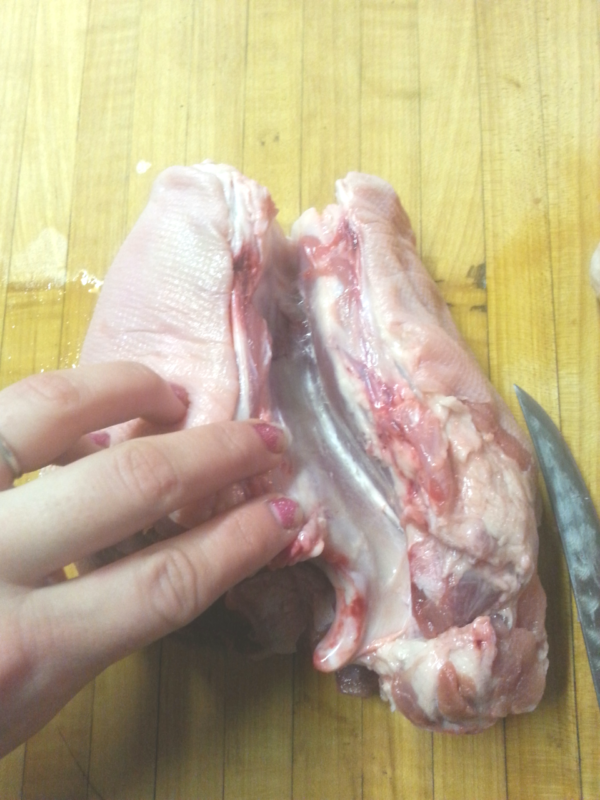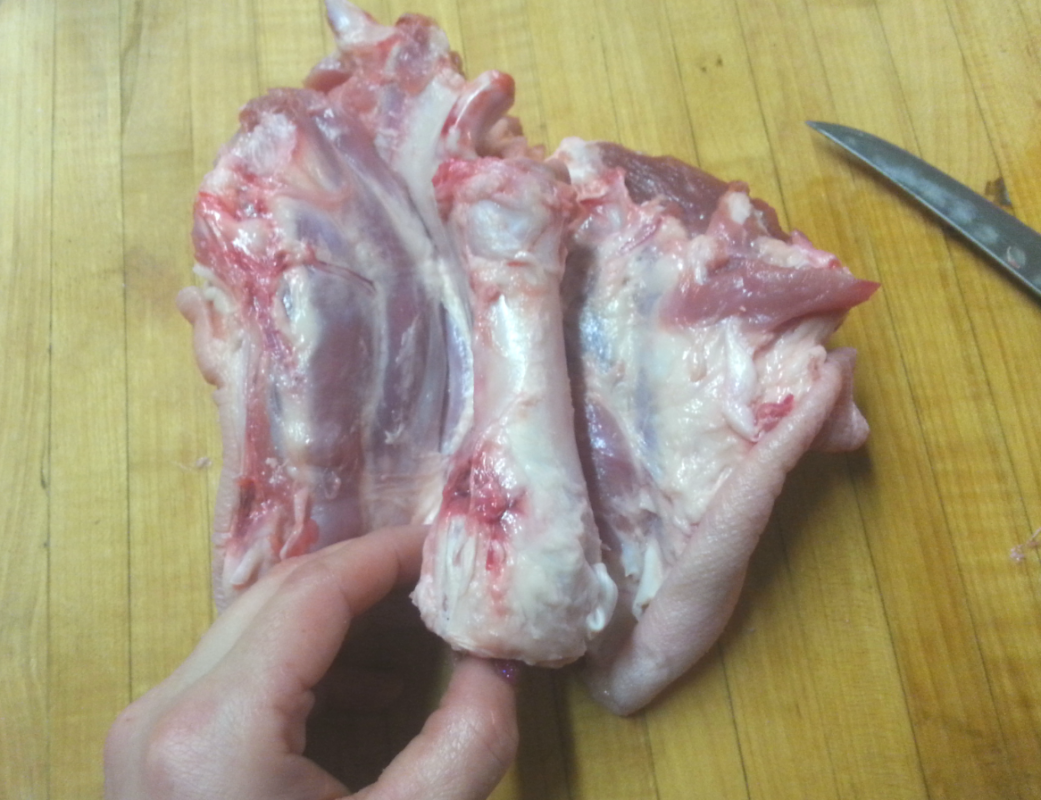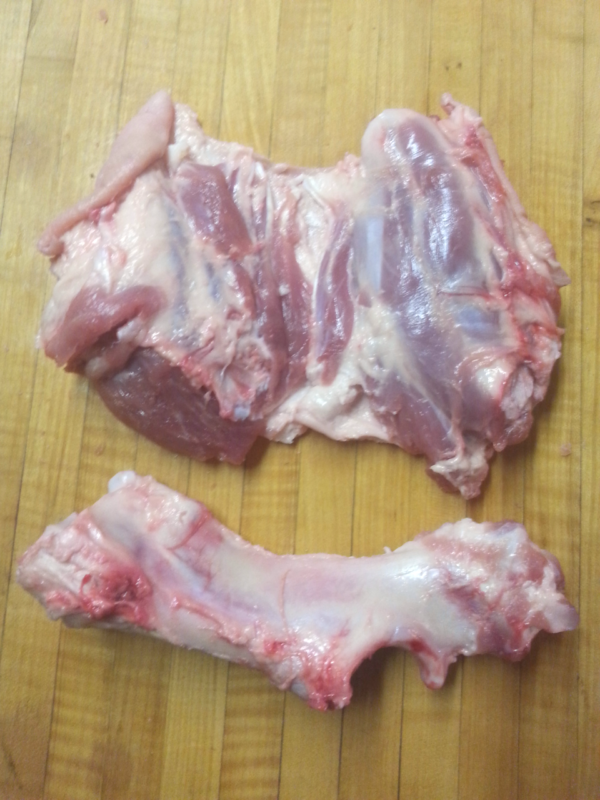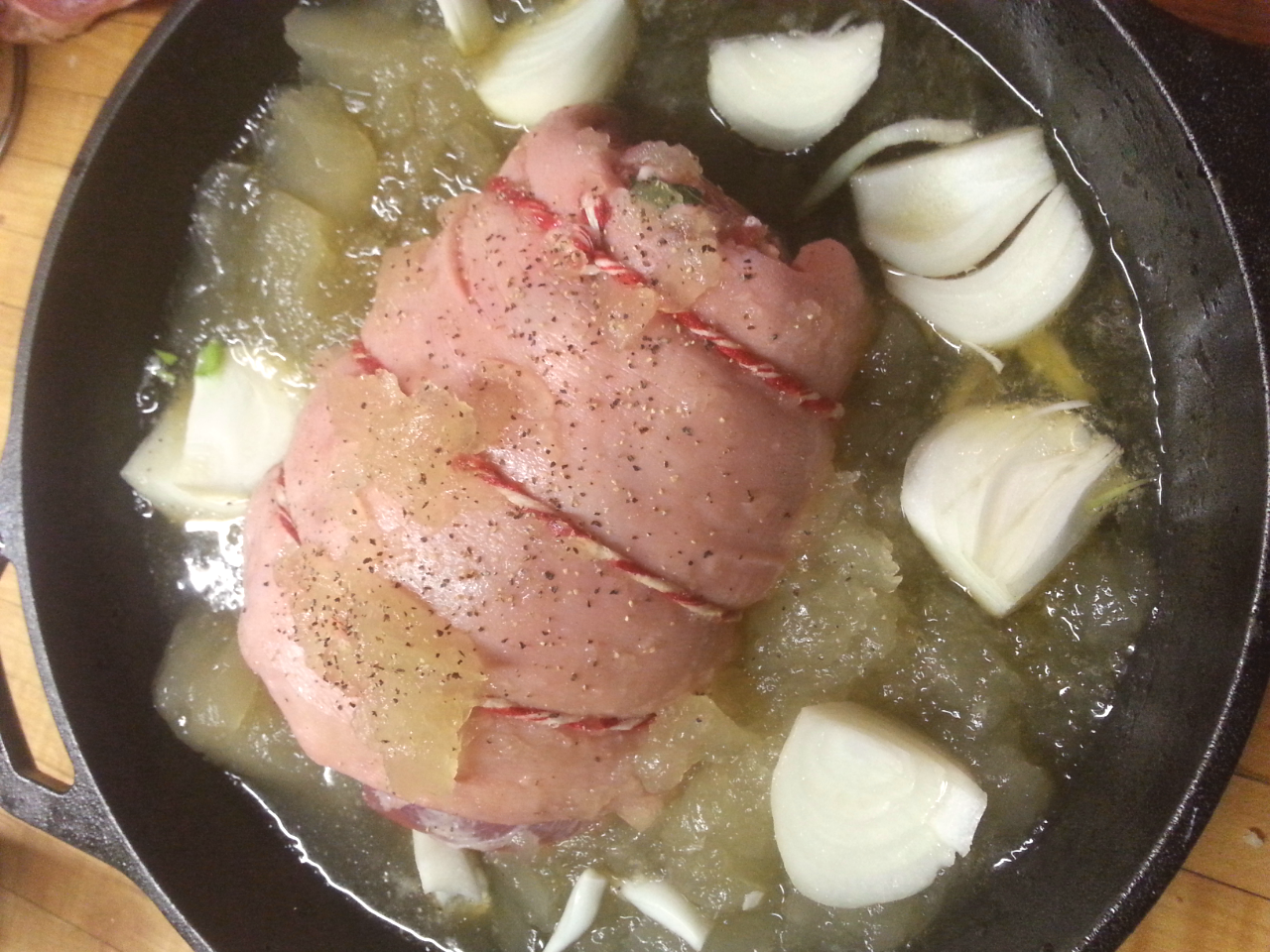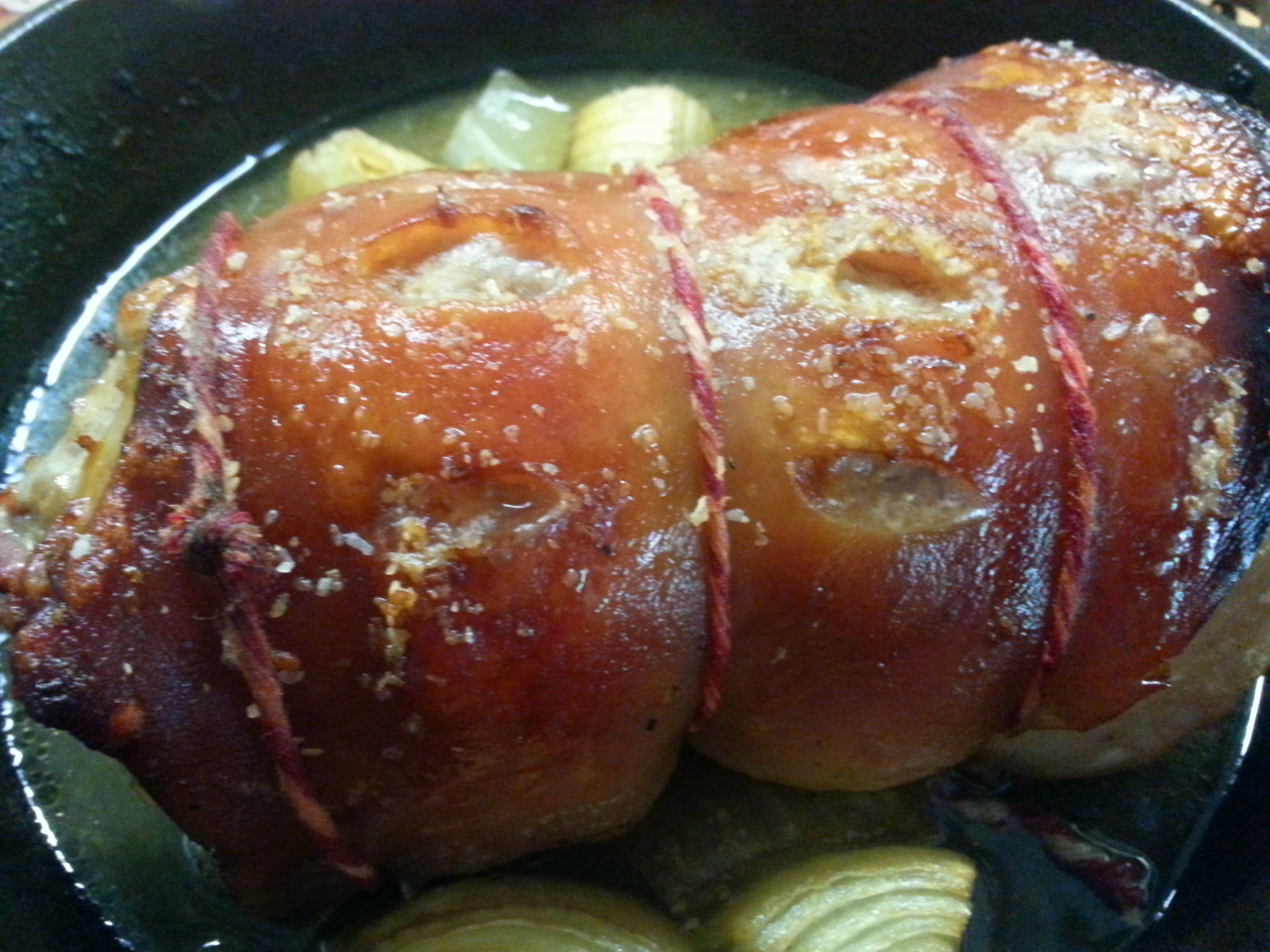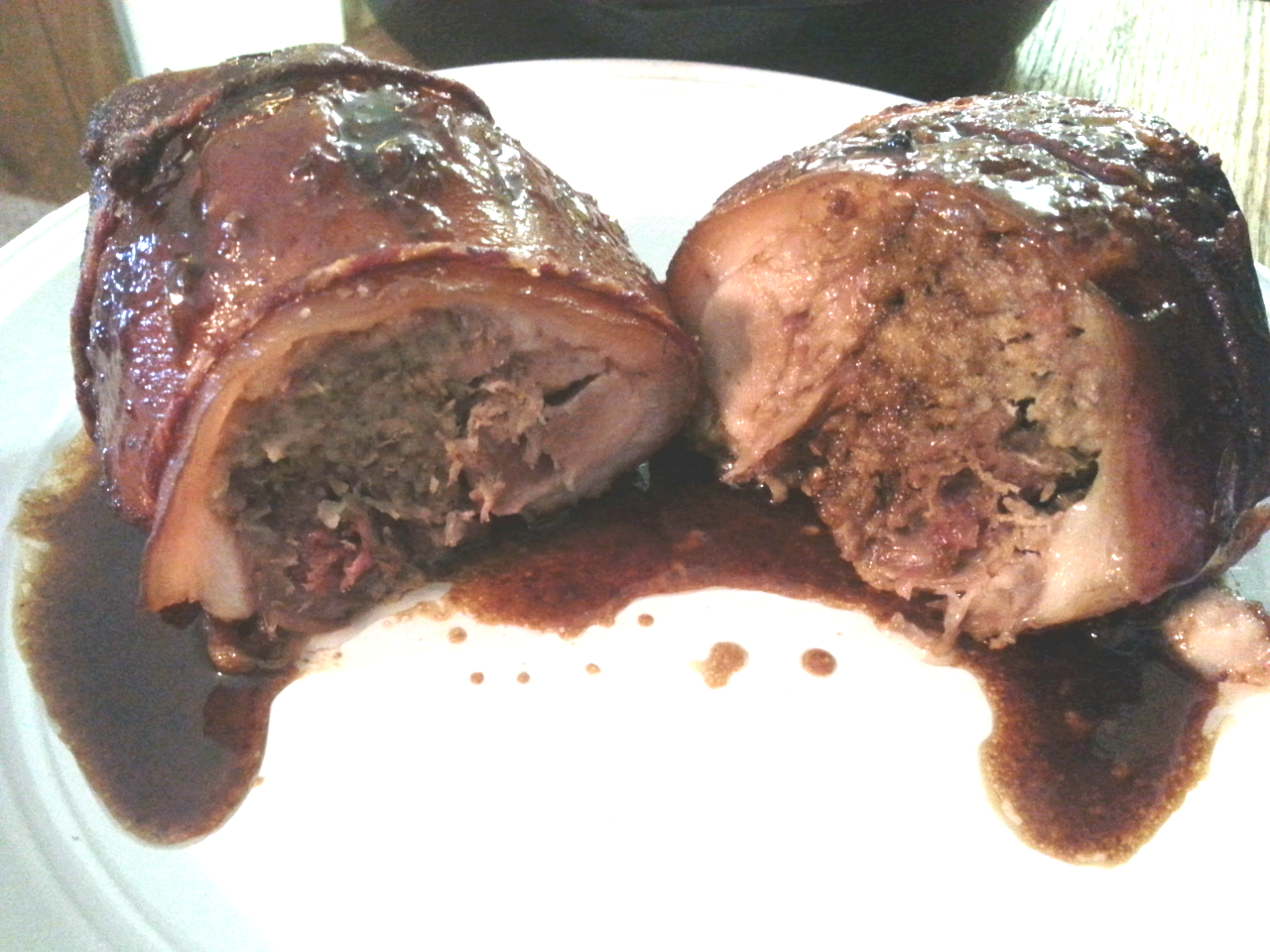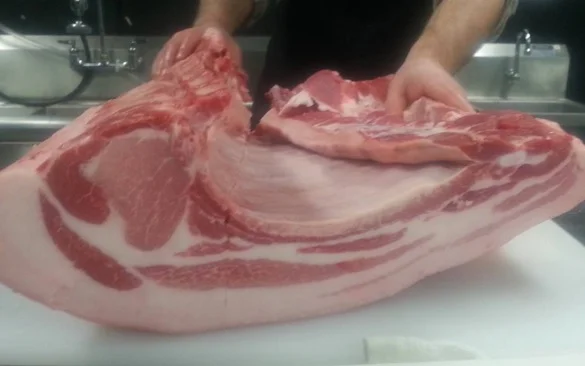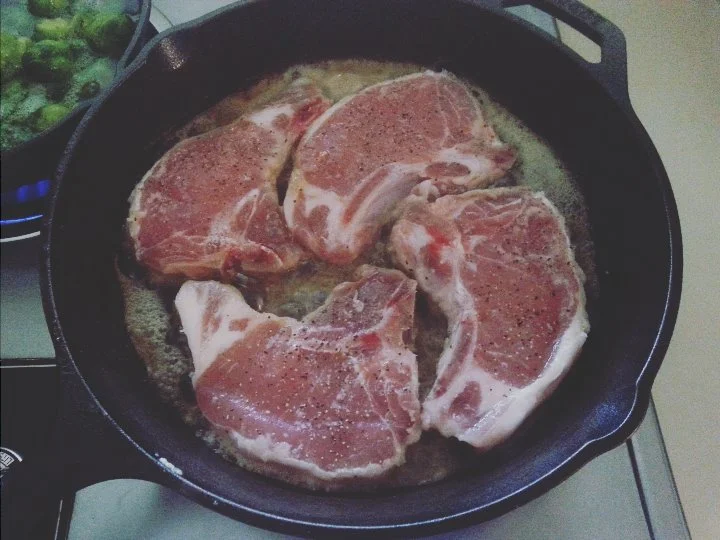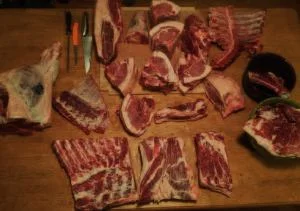You’ve freezer-shelved the chops, bacon and sausage, you’ve come to terms emotionally with the lard, and just when you think you’re done unloading freezer bags from your friendly Hambulance driver, BLAM. Here comes the fresh hock to throw your animal protein-eating self into a tailspin.
By the time this delightful pig calf/forearm makes its way to your freezer, it’s been put to good use by the hog as he runs up and down the hills of Tuscarawas County. Thus, this frequently flexed knuckle is chock full of flavor. Please don’t overlook it as a dinner side piece.
We leave ours fresh (uncured and unsmoked) for our shareholders so it can serve as a blank canvass for some badass kitchen prowess. Not feeling it? Need some help? I’m here for you. Can you feel my supportive hand on your shoulder? And now, can you feel it slowly move down toward your bicep? Have you been working out?
Sorry.
Not quite trotter, not quite butt: The hocks If I’d ask a room full of grandmas what to do with a hock, they’d all raise their hands and say, “pot of beans!” And the grandmas are right. That’s one of the best ways to prepare the hock. There are plenty of resources for brining and smoking your fresh pork hock. A few are so good you might want to skip the pot of beans all together. You can also slow cook the hock for a stew that cooks itself while you are at work. But I want to take you straight to Advanced Hock Preparation. I’ve been watching you for a while now, and I think you’re ready.
Ballotine of pork
[h5]Or STUFFED PORK KNUCKLE, if you’re Ohio Proud.[/h5]
Here you see two versions of the same hock -- The one on the left was lovingly harvested at the joint by Seth and myself with skin left on, and the other bandsawed into submission by the fine craftsman at DeeJays Custom Processing. The guy on the right will probably look more like what you have in your freezer from me. If you want the lovely skin to remain on all your cuts, for now, you halfta chop the pig yourself. Keep an eye on Facebook. In the next few days we'll announce dates for one of our summer whole hog butcher classes here at the farm and at The Commissary in Columbus. (The skin -- that’s how they getcha.)
In order to stuff the hock, we have to get that bone out of there and make some room. Hock deboning is a fun little practice round for the butcher-curious. There is no real penalty for screwing this up. You can still brine, smoke or roast any maimed chunks of meat to add flavor to any soup or stock. Ignore the voice in your head that tells you you’re not qualified.
Now, when I was completing my master butchery apprenticeship in the southern hills of France, they taught me to cut down the right side of the bone like … ahh ... just yanking chains. My only training has been at home in Nowhere, Ohio working through piles of dead bodies with kids screaming that they’re hungry for dinner and YouTube running in the background. Trial by fire. Take that for what it’s worth. I make an incision down the center until I hit bone, then cut along the length if the bone, using the tip of my knife to freeing the muscle from the bone all the way around.
The muscle will want to separate and be free. You won’t find much resistance. No super strength required. The connective tissue will guide you. Flip it over and release the other side. Be careful along that back edge to not pierce the skin or tear your muscle group in half. If you do, you can still work with what you have left.
Special note:
When Seth and I are separating hocks from trotters in our home kitchen, as DIY butchers, we make an incision at the joint, explore with the knife and release the hocks at the ball and socket. But you see, in America, butchers have band saws and can make elbows happen wherever they damn well please. Following the natural dotted lines of the pig is not required with powerful mechanization. Don’t be surprised if your hock contains (like this one did) an extra tibia, fibula, radius, ulna bone or two. Just cut out the bone you find. You don’t have to know the name of it.
[h5]Now the fun part.[/h5]
With the bone removed, you can put whatever you want in there. For this meal, it looks like I went with about a half a pound of fresh sausage, not even a quarter cup of breadcrumbs, splash of lemon juice, maybe some type of chile powder and some fresh snipped parsley? I really should've written this down. Need more ideas? Google “Ballotine of pork.” Ballotine is a French term for taking bones out and putting your sausage inside of things. You’re welcome.
In addition to whatever sausage is thawed in the fridge, you can incorporate chunks of brined meat, cubed bacon or pancetta, pistachios, apples, dried cherries, prunes soaked with sherry .. the world is yours to stuff all up in there.
Roll, tie and place in cast iron with as much juicy braising liquid as you can fit in there: Stock, beer, wine are some suggestions. I used a roasted pork stock here. One of these days I’m going to throw this roll in the deep fryer and see what happens.
Now, you want to cook this low and slow to break down all the muscles, skin, tendons, ligaments and connective tissues that make up your hock, but you also want the skin crispy, which requires a hot cook. This is the constant challenge of mankind. (Don’t have skin? Try wrapping some bacon around it.)
What I’ve found works best is to score and salt the skin, and blast the pork roll in a hot, 500-degree oven until it looks right. You want it bubbly and crispy. 30-40 minutes usually does the trick. Keep a close eye on it. After blasting, turn the heat down to 300 and simmer your hock for about 3-4 hours. Yes. 3-4 hours.
The hock is done and maybe you think, “OK, I can finally eat. There is nothing more I could possibly do to adulterate this poor hock.” Oh, but you’re wrong. You can actually let this gelatinous roll cool in the fridge over night. The next day you can slice, bread and fry it. I’m not kidding. It’s ridiculously rich. You can eat it cold and call it a knuckle sandwich. You can’t make this stuff up.
Now, isn’t that more fun than a pot of beans?
Enjoy experimenting! Let me know how it turns out!
Next up: Chiccarrones, aka pork rinds.




